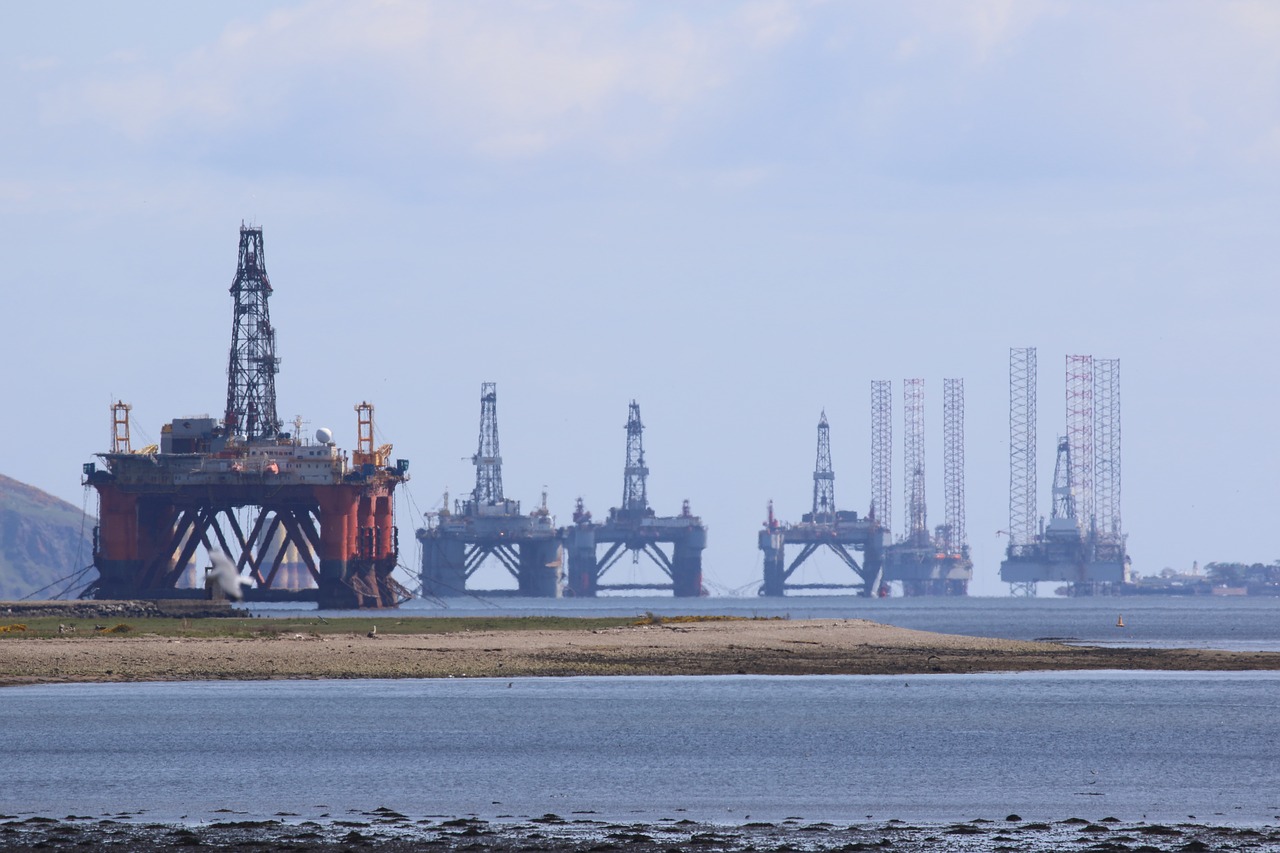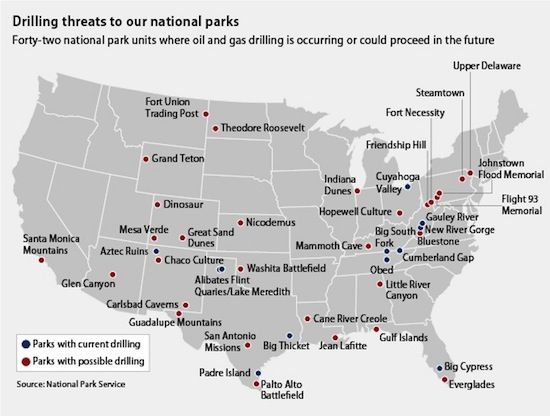The U.S. National Park System currently encompasses more than 84 million acres of land in the United States, and if oil-funded politicians in Washington, D.C. get their way, those millions of protected acres could soon become the playground for the dirty energy industry.
According to a new report by the Center for American Progress (CAP), oil and gas drilling is already taking place in at least 12 areas designated as “national parks” by the U.S. Department of Interior, with as many as 30 more being considered for drilling.
CAP’s chart below shows us where drilling is occurring, or could likely occur in the near future:
As CAP points out, current rules and regulations require that any drilling on public lands adhere to strict standards regarding air, water, and other environmental pollution. But laws and regulations can only lay out guidelines for the industry – they can’t predict or prevent when accidents may occur.
And if history is any indicator, there is massive cause for concern over oil and gas drilling on our federally protected lands.
From 2000 to 2010, more than 86 different oil and gas spills were reported, resulting in the release of millions of gallons of oil into the environment. The largest and most notable during this time period was BP’s Deepwater Horizon oil geyser. These spills and accidents affected states across the U.S. – Alaska, Texas, California, Washington, Louisiana, Mississippi, Florida, South Carolina, New York, Rhode Island, Connecticut, Massachusetts – the list goes on and on.
But those 86 events were just the massive events. Smaller, isolated spills and “accidents” are all-too common in drilling areas. For example, studies show that in the year 2011 there were more than 1,000 spills, leaks, or wastewater discharges that resulted in environmental harm. And those 1,000 incidents were only the ones that happened in the state of North Dakota.
These spills, and the hundreds that occurred in the years prior to 2000, have cost U.S. taxpayers billions of dollars.
And contrary to what they’ve been telling reporters and even Congress, it appears likely that the Republican Romney/Ryan ticket is in favor of drilling in our protected national parks.
At a recent testimony before Congress, Romney’s chief energy advisor Harold Hamm, who also happens to be the CEO of Continental Resources, told us that the Romney camp had absolutely no plans to allow drilling in national parks.
But actions speak much louder than words, especially words from a campaign that is struggling to stay on message. And the Center for American Progress shows us that, based on their voting records and proposals, Romney and Ryan have every intention of allowing our national parks to be pillaged by the dirty energy industry:
So what are Gov. Romney’s and his running mate, Rep. Paul Ryan’s (R-WI), policies on public lands? We examined the plans of the two candidates alongside their previous votes and policy positions, discovering that, for them, the purpose of public lands is:
– More access for oil and gas drilling and less investment in cleaner alternative energy sources
– The sale of public lands rather than further conservation for future enjoyment and job creation
– Less public access to public lands due to ill-considered budget cuts rather than investments in our parks and wilderness areas to boost local economies and jobs
In the 2011 – 2012 donation cycle, Mitt Romney is currently the recipient of the largest amount of cash from the oil and gas industries, with more than $2.2 million in donations, according to OpenSecrets.org. By contrast, President Obama has received only $372,000 from these industries during the same cycle. The numbers alone tell the story about energy policy that the Romney campaign continues to deny.
Subscribe to our newsletter
Stay up to date with DeSmog news and alerts








